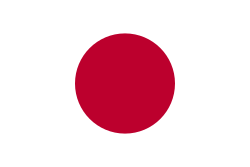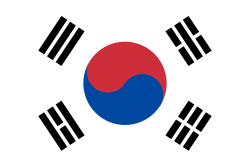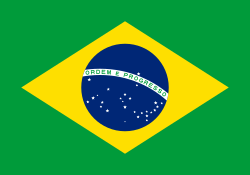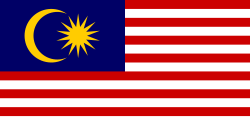Japans Grand Prix 2011
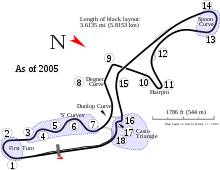 | |||
| Datum | 9 oktober 2011 | ||
|---|---|---|---|
| Bana | Suzuka Circuit | ||
| Sträcka | 53 varv, 307,573 km | ||
| Vinnare | McLaren-Mercedes | ||
| Pole position | Red Bull-Renault, 1.30,466 | ||
| Snabbaste varv | McLaren-Mercedes, 1.36,568 (varv 52) | ||
| |||
Japans Grand Prix 2011, officiellt 2011 Formula 1 Japanese Grand Prix, var en Formel 1-tävling som hölls den 9 oktober 2011 på Suzuka Circuit i Japan. Det var den femtonde tävlingen av Formel 1-säsongen 2011 och kördes över 53 varv. Vinnare av loppet blev Jenson Button för McLaren, tvåa blev Fernando Alonso för Ferrari och trea blev Sebastian Vettel för Red Bull.
Kvalet

| Vidare från första kvalrundan ▬▬ Vidare från andra kvalrundan ▬▬ |
Noteringar:
- ^1 — Kamui Kobayashi, Michael Schumacher, Bruno Senna och Vitalij Petrov satte inga tider i den tredje kvalomgången.
- ^2 — Sergio Pérez satte ingen tid i den andra kvalomgången.
- ^3 — Nico Rosberg och Vitantonio Liuzzi satte inga tider i den första kvalomgången.[1]
Loppet


| Förare och stall som tog poäng ▬▬ |
Ställning efter loppet
|
|
- Notering: Endast de fem bästa placeringarna i vardera mästerskap finns med på listorna.
Referenser
Noter
- ^ Elizalde, Pablo (8 oktober 2011). ”Liuzzi, Rosberg allowed to race in Japan despite not posting a time in qualifying” (på engelska). Autosport (Haymarket Publications). http://www.autosport.com/news/report.php/id/95163. Läst 8 oktober 2011.
Webbkällor
- ”2011 Formula 1 Japanese Grand Prix (Qualifying)” (på engelska). Formula1.com. 8 oktober 2011. Läst 25 september 2014.
- ”2011 Formula 1 Japanese Grand Prix (Race)” (på engelska). Formula1.com. 9 oktober 2011. Läst 25 september 2014.
- Chicane F1 – 2011 Japanese GP
Externa länkar
 Wikimedia Commons har media som rör Japans Grand Prix 2011.
Wikimedia Commons har media som rör Japans Grand Prix 2011.
| ||||||||
Media som används på denna webbplats
Författare/Upphovsman: Will Pittenger, Licens: CC BY-SA 3.0
Track map as of 2005 for use with Suzuka Circuit.
Black left-pointing triangle ◀, U+25C0 out of Unicode-Block Geometric Shapes (25A0–25FF)
Black right-pointing triangle ▶, U+25B6 out of Unicode-Block Geometric Shapes (25A0–25FF)
The civil ensign and flag of Belgium. It is identical to Image:Flag of Belgium.svg except that it has a 2:3 ratio, instead of 13:15.
The Flag of Europe is the flag and emblem of the European Union (EU) and Council of Europe (CoE). It consists of a circle of 12 golden (yellow) stars on a blue background. It was created in 1955 by the CoE and adopted by the EU, then the European Communities, in the 1980s.
The CoE and EU are distinct in membership and nature. The CoE is a 47-member international organisation dealing with human rights and rule of law, while the EU is a quasi-federal union of 27 states focused on economic integration and political cooperation. Today, the flag is mostly associated with the latter.
It was the intention of the CoE that the flag should come to represent Europe as a whole, and since its adoption the membership of the CoE covers nearly the entire continent. This is why the EU adopted the same flag. The flag has been used to represent Europe in sporting events and as a pro-democracy banner outside the Union.Författare/Upphovsman: Odor, Licens: CC BY-SA 3.0
Race result of 2011 Japanese Grand Prix in Suzuka
Författare/Upphovsman: Morio, Licens: CC BY-SA 3.0
Formula One 2011 Rd.15 Japanese GP: Jenson Button (McLaren) during race.
Författare/Upphovsman: Morio, Licens: CC BY-SA 3.0
Formula One 2011 Rd.15 Japanese GP: Sebastian Vettel (Red Bull) celebrating the world title.
Författare/Upphovsman: nhayashida, Licens: CC BY 2.0
Fernando Alonso lors du Grand Prix du Japon 2011 sur Ferrari F150° Italia.
Författare/Upphovsman: Morio, Licens: CC BY-SA 3.0
Formula One 2011 Rd.15 Japanese GP: Sebastian Vettel (Red Bull) during race.
Författare/Upphovsman: Odor, Licens: CC BY-SA 3.0
Starting grid of 2011 Japanese Grand Prix in Suzuka
Författare/Upphovsman: Odor, Licens: CC BY-SA 3.0
Qualifying result of 2011 Japanese Grand Prix in Suzuka




